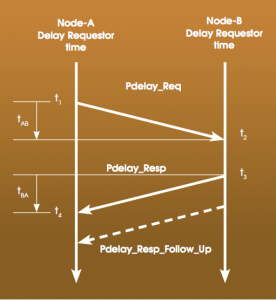For multi-channel data acquisition systems, getting the correct readings in the correct timed order is crucial. System designers have two options for acquiring data in a deterministic fashion. They can use a real-time operating system (RTOS), that has a known buffer delay/ processing order or acquire data with a time-stamp for every sample and use precise hardware triggers and an accurate clock.
For some applications, the right choice is an RTOS. There are some limitations, however. The two biggest limitations are test system development time and the efficiency or speed of the application. Applications in a RTOS environment need to be written to achieve the desired deterministic output; interrupts, delays and wait states must all be tightly controlled.
By contrast, DAQ systems that use time-stamped data can process the data using a standard, off-the-shelf host PC with a general-purpose OS in any order and with event-driven or time-sharing buffer delays. It still forms coherent deterministic time-ordered data as each sample has an individual time stamp. The important part of this system is having a stable, accurate clock that all the DAQ instruments use. Such clocks can include but are not limited to Global Positioning System (GPS), NTC, Temperature Compensated Crystal Oscillators (TCXOs), etc.
LXI (LAN eXtensions for Instrumentation) is a popular industry standard that enables time-stamped data and scalability. LXI allows system developers to build test and measurement systems quickly because it is based on the low-cost flexibility and expandability of Ethernet. To provide accurately time-stamped data, LXI systems have the following features:
- LXI Wired Trigger Bus
- LXI Event Messaging
- LXI Clock Synchronization
- LXI Time-Stamped Data
- LXI Event Logs
One clock method that offers extremely accurate timed data over LXI is described in IEEE-1588-2008, “IEEE Standard for a Precision Clock Synchronization Protocol for Networked Measurement and Control Systems,” Commonly known as Precision Time Protocol version 2 (PTPv2), this method uses a GPS signal to control a master clock that synchronizes the instruments connected to a network.

Figure 1 (right) is a timing diagram that illustrates how IEEE-1588 synchronization works. The master clock sends a synchronization message with a time value to the connected slaves. At the same moment, the time at which the message leaves the master is accurately measured. The master then sends this complete exact transmission time of the corresponding sync message to the slave instruments in a second follow-up message. The slave instruments accurately measure the reception time of these messages and can correct their own clock values to match the master. At this point, if the transmission line had no delay, both clocks would be synchronized.
In the second phase of the synchronization, the delay measurement determines the run time between master and slave. This transmission line delay is determined by a Delay Request and Delay Response message; the slave instruments then update their clocks to take account of the delay. This clock adjustment to determine transmission line delay happens continuously and does not affect data transmission.
With time-stamped data, the biggest drawback is the extra processing needed to handle the time-stamp data, but this drawback is relatively minor. If all the instruments in the test system are LXI-compliant, then the time stamp has the same format and is easy to work with.
Using instruments with time-stamped data rather than an RTOS greatly reduces the time needed to develop, upgrade, or re-roll test and measurement systems. For small embedded systems, an RTOS is normally the preferred solution, but for large, expandable test systems, using a general-purpose OS is the way to go.
Building these systems with LXI instruments with multiple trigger bus lines can easily provide a quick and low-cost route to obtaining deterministic data. Adding a GPS clock and an IEEE-1588 master to the system further improves the timing of data and gives an accuracy of less than 100ns over a large network.
VTI offers the SentinelEX instrument line, all equipped with an LXI interface, IEEE-1588 precision time source, and multiple bidirectional trigger lines. For more information about the SentinelEX and other VTI products, contact VTI Instruments phone 949.955.1894 or send an email to vti.sales@ametek.com.
